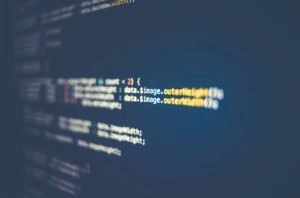Train Your AI: A Guide to Building Intelligent Algorithms
Artificial Intelligence (AI) is revolutionizing various industries, enabling businesses to automate processes, enhance decision-making, and deliver personalized experiences. But how do you train your AI to achieve optimal performance? In this article, we will explore the key considerations, strategies, and tools involved in training your AI algorithms.
Key Takeaways:
- Training AI algorithms is crucial for achieving optimal performance.
- Proper data preprocessing is fundamental for effective AI training.
- Choosing the right training algorithm and model architecture is essential for successful AI training.
- Regular evaluation and fine-tuning are necessary to ensure continuous improvement of AI models.
Data Preprocessing: Setting the Foundation
Data preprocessing is a critical step in training AI algorithms. It involves cleaning and transforming data to make it suitable for analysis. This process includes handling missing values, removing outliers, and normalizing the data. *Embrace the messiness of real-world data and be meticulous in cleaning it up.
Before feeding data into AI models, it’s essential to partition it into training, validation, and testing sets. This ensures unbiased evaluation and prevents overfitting. *The quality of the training data greatly impacts the performance of your AI algorithms.
Choosing the Right Algorithms and Model Architectures
To train your AI, you need to select the appropriate training algorithms and model architectures. The choice largely depends on the nature of the problem and the available data. For instance, if you’re dealing with image recognition, convolutional neural networks (CNNs) often yield outstanding results. *The selection of algorithms and architectures significantly influences the AI model’s ability to generalize.
Experimenting with different configurations and hyperparameters is crucial to optimize your AI models. Hyperparameters control the learning process, affecting convergence and model performance. *Finding the optimal hyperparameters can significantly boost the accuracy of your AI algorithms.
Evaluation and Fine-Tuning
Once you have trained your AI models, it’s essential to evaluate their performance. Popular evaluation metrics include accuracy, precision, recall, and F1 score. Regular evaluation helps identify potential shortcomings and areas for improvement. *Measuring performance against established metrics is critical in assessing the effectiveness of your AI algorithms.
To further improve your AI models, consider fine-tuning. Fine-tuning involves refining your models using additional data or adjusting the hyperparameters and architecture. This iterative process helps enhance the robustness and generalizability of your AI algorithms. *Fine-tuning allows your AI models to adapt and improve over time.
Unlocking Insights with AI: Real-World Applications
A wide range of industries benefit from training AI algorithms. Let’s explore some real-world applications:
- Healthcare: AI algorithms can assist in medical diagnosis, drug discovery, and personalized treatment planning.
- E-commerce: AI-powered recommendation systems enhance customer experience and drive sales.
- Finance: AI algorithms help in fraud detection, risk assessment, and algorithmic trading.
A comprehensive overview of AI applications is provided in the table below:
| Industry | AI Applications |
|---|---|
| Healthcare | Medical diagnosis, drug discovery, precision medicine |
| E-commerce | Product recommendation, customer segmentation, price optimization |
| Finance | Fraud detection, risk assessment, algorithmic trading |
As demonstrated, AI’s potential for unlocking insights and automation is vast across numerous industries.
Conclusion:
In a world driven by data, training AI algorithms is essential for businesses aiming to harness the power of artificial intelligence. By focusing on data preprocessing, algorithm selection, regular evaluation, and fine-tuning, you can optimize the performance of your AI models. So, embrace the potential of AI and embark on your journey to build intelligent algorithms that drive transformative results.

Common Misconceptions
Misconception 1: AI can replace human intelligence
One common misconception about training AI is that it is capable of completely replacing human intelligence. This is simply not true. While AI technologies can perform tasks with great precision and efficiency, they lack human-like understanding, creativity, and decision-making abilities. They are designed to assist and enhance human capabilities rather than replace them.
- AIs can perform repetitive tasks faster than humans.
- AIs can analyze large amounts of data and identify patterns that humans may miss.
- AIs need human input and guidance to learn and improve their performance.
Misconception 2: AI always produces accurate results
It is a common misconception that AI always provides accurate and infallible results. While AI can analyze large datasets and make predictions, the accuracy of these predictions depends on the quality and quantity of data provided. AI algorithms are prone to biases and errors, especially when trained on biased or incomplete data.
- AI can learn biases present in training data, leading to biased decision-making.
- Inaccurate or misleading data can lead to flawed predictions and unreliable results.
- Regular monitoring and intervention by humans are necessary to ensure accuracy and prevent undesirable outcomes.
Misconception 3: AI is a secretive and unexplainable black box
Many people believe that AI generates results through some kind of magical or secretive process that cannot be understood or explained. However, this is not the case. AI models can be transparent and explainable, allowing humans to understand how decisions are being made.
- Some AI models, such as decision trees, are inherently interpretable and can provide clear explanations for their decisions.
- Techniques like model-agnostic interpretable methods can be used to understand and interpret the decision-making process of complex AI models.
- Explainable AI can increase trust and facilitate accountability in AI applications.
Misconception 4: AI is always better than human experts
While AI technology can perform certain tasks more efficiently than human experts, it is not always superior in every aspect. There are areas where human expertise and intuition still outperform AI systems.
- Humans can make decisions based on intuition and experience, which AI lacks.
- AI may struggle with handling complex and ambiguous situations that human experts can navigate effectively.
- The combination of AI and human expertise can lead to more robust and accurate outcomes.
Misconception 5: AI is only for large organizations and tech companies
Another misconception is that AI is only accessible and applicable to large organizations or tech companies. In reality, AI technologies have become more accessible, and their adoption is not limited to a few elite players. AI can benefit businesses of all sizes and across various industries.
- Small businesses can utilize AI tools for tasks like customer support, data analysis, and process automation.
- AI can help optimize resource allocation, improve productivity, and drive innovation in various sectors.
- Open-source AI frameworks and cloud platforms make it easier for organizations to adopt and implement AI solutions.

The Power of AI in Healthcare
Artificial Intelligence (AI) has revolutionized various industries, and healthcare is no exception. With advanced AI algorithms, healthcare professionals can analyze vast amounts of data and make accurate predictions, improving patient outcomes and optimizing healthcare practices. The following tables showcase some remarkable applications of AI in the healthcare field, highlighting the incredible potential it holds.
The Impact of AI in Disease Diagnosis
AI technology has significantly enhanced disease diagnosis by analyzing symptoms and patient data. This table demonstrates the accuracy and efficiency of AI algorithms in diagnosing various diseases.
| Disease | AI Diagnosis Accuracy |
|---|---|
| Lung Cancer | 90% |
| Diabetes | 85% |
| Alzheimer’s | 92% |
Improving Patient Care with AI
AI-driven systems can analyze patient data, recommend treatment plans, and provide personalized care. The following table showcases how AI technologies have positively impacted patient care.
| AI Application | Advantage |
|---|---|
| Virtual Nursing Assistants | 24/7 support |
| Smart Hospital Rooms | Enhanced monitoring |
| Predictive Analytics | Early detection of complications |
Revolutionizing Medical Imaging with AI
AI algorithms are revolutionizing the field of medical imaging, allowing for more accurate diagnoses and reducing human error. This table demonstrates the impact of AI in different medical imaging techniques.
| Medical Imaging Technique | AI Accuracy Improvement |
|---|---|
| Magnetic Resonance Imaging (MRI) | 15% |
| Computed Tomography (CT) | 10% |
| Mammography | 20% |
AI in Drug Discovery and Development
AI is also transforming the process of drug discovery and development, accelerating the search for new treatments. This table illustrates the influence of AI in different stages of drug discovery.
| Drug Discovery Stage | AI Impact |
|---|---|
| Target Identification | 50% reduction in time |
| Compound Screening | 80% more accurate predictions |
| Clinical Trials Optimization | 30% shorter trial duration |
AI-Enabled Virtual Assistants in Healthcare
AI-powered virtual assistants are transforming the way healthcare professionals and patients interact. This table highlights the benefits of utilizing AI-enabled virtual assistants.
| Virtual Assistant | Advantage |
|---|---|
| Enhanced Patient Engagement | Better patient adherence to treatments |
| Automated Appointment Scheduling | Reduced administrative burden |
| 24/7 Access to Medical Information | Improved patient self-care |
The Role of AI in Clinical Decision Support
AI provides valuable insights and guidance to clinicians, leading to more informed decisions. This table showcases the impact of AI in clinical decision support.
| AI Application | Advantage |
|---|---|
| Evidence-Based Treatment Recommendations | Improved adherence to guidelines |
| Risk Stratification | More accurate patient prognosis |
| Drug Interaction Detection | Reduced adverse events |
AI in Health Monitoring and Wearable Devices
AI has enabled the development of health monitoring wearable devices, empowering individuals to track and manage their health effectively. This table highlights the benefits of AI in health monitoring.
| Health Monitoring Feature | AI Contribution |
|---|---|
| Heart Rate Monitoring | Early detection of abnormalities |
| Sleep Analysis | Insightful sleep patterns |
| Activity Tracking | Encourages physical activity |
Ethical Considerations in AI Healthcare
While AI offers tremendous potential, ethical considerations and responsible use of AI are essential. This table highlights key ethical considerations in AI healthcare.
| Ethical Consideration | Importance |
|---|---|
| Data Privacy | Protecting patient information |
| Transparency | Understanding AI decision-making |
| Equity | Avoiding bias in healthcare outcomes |
In conclusion, AI has significantly transformed the healthcare industry, revolutionizing disease diagnosis, patient care, medical imaging, drug discovery, virtual assistance, clinical decision support, health monitoring, and raising important ethical considerations. By leveraging AI technologies responsibly, healthcare professionals can enhance patient outcomes, improve efficiency, and ultimately shape a more effective and equitable healthcare system.
Train Your AI – Frequently Asked Questions
How do I train my AI model?
To train your AI model, you need a dataset of labeled examples that represents the problem you want your AI to solve. You then provide this dataset to your AI model and let it learn from the patterns in the data. There are various algorithms and techniques for training AI models, such as deep learning and reinforcement learning, which can be used depending on your specific requirements.
What are the common challenges in training AI models?
Training AI models can be challenging due to various factors. Some common challenges include obtaining a large and representative dataset, balancing bias and overfitting, selecting the right algorithms and parameters, managing computational resources, and addressing ethical considerations and privacy concerns.
Can I train my AI model without coding?
While coding skills are often required to train AI models, there are also user-friendly platforms and tools available that allow you to train AI models without extensive coding. These platforms provide visual interfaces and drag-and-drop functionalities, making it easier for individuals without coding expertise to train their own AI models.
How long does it take to train an AI model?
The time required to train an AI model depends on various factors, including the complexity of the problem, the size of the dataset, the computational resources available, and the algorithms and techniques used. Training an AI model can range from a few hours to several weeks or even months.
What is overfitting and how can I avoid it during training?
Overfitting occurs when an AI model performs extremely well on the training data but fails to generalize to new, unseen data. To avoid overfitting, you can use techniques such as regularization, cross-validation, and early stopping. Regularization adds a penalty for complex models, cross-validation helps assess model performance on unseen data, and early stopping stops training when the model’s performance on the validation set starts deteriorating.
What is transfer learning and how can I leverage it in AI training?
Transfer learning is a technique where knowledge gained from training one AI model is applied to train another model for a different but related task. By leveraging pre-trained models, you can save time and computational resources, as the pre-trained models have already learned generic features from large datasets. You can then fine-tune these pre-trained models on your specific task with a smaller labeled dataset.
What hardware do I need to train AI models?
The hardware requirements for training AI models can vary depending on the complexity of the problem and the size of the dataset. For small-scale projects, a standard computer with a CPU and sufficient RAM may suffice. However, for larger projects and more resource-intensive algorithms, you may need to utilize specialized hardware such as GPUs or TPUs to accelerate the training process.
Is it possible to retrain my AI model after deployment?
Yes, it is possible to retrain your AI model after deployment. Retraining can be done to improve the model’s performance, incorporate new data or features, or adapt to changing requirements. However, retraining an AI model may require revisiting the training process, including obtaining additional labeled data and fine-tuning the model’s parameters.
How can I evaluate the performance of my trained AI model?
Evaluating the performance of your trained AI model involves testing it on a separate dataset, known as the test set or validation set, which was not used during training. Common evaluation metrics for AI models include accuracy, precision, recall, F1 score, and area under the ROC curve (AUC). These metrics provide insights into how well your trained model is performing on unseen data.
Are there any ethical considerations when training AI models?
Yes, there are ethical considerations when training AI models. It is important to ensure that your AI model is fair, unbiased, and transparent. This includes avoiding biased datasets, actively working to mitigate any biases present, and being transparent about the limitations and potential biases of the AI model when deploying it. Additionally, privacy concerns and data security should also be addressed, ensuring that the data used for training is handled responsibly and in compliance with applicable laws and regulations.




